Acoma Crape Myrtle Tree: Grow & Care for Lagerstroemia Acoma
Written by Iris
Dec 15 2021
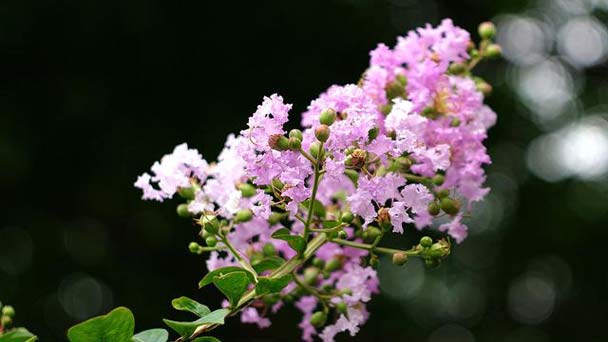
Acoma Crape Myrtle (Lagerstroemia 'Acoma') has proven to be an excellent plant for Oklahoma over the years. Gorgeous summer flowers, charming bark and (in many cases) gorgeous fall colors make Acoma Crape Myrtle year-round landscape performers. Acoma Crape Myrtle grow fairly quickly, and bloom from summer to fall. Acoma Crape Myrtle tree can grow in full sun or partial shade, but will need at least six hours of sunlight to bloom. Overall, Acoma Crape Myrtle is easy to grow and very beneficial in terms of color, shade and landscape architecture.
You should also plant acoma crape myrtle tree in a location where the plant's sizeable crown has room to grow and spread. Some Acoma crape myrtles can be wider than they are tall. So, if you want to enjoy the blooming shrubs' full beauty, grow Acoma Crape Myrtle in a spot with enough room for their foliage.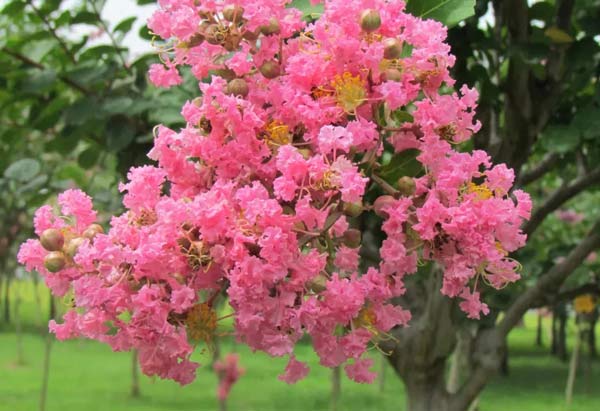
Use clean scissors or garden shears to remove hardwood or softwood cuttings. Hardwood cuttings should be about eight inches in length. Take hardwood cuttings once the tree has become dormant for the year, typically in the late fall. Softwood cuttings are obtained in the spring or summer and should be about six inches in length with several nodes.
Plant the cutting in a container with quality potting soil, leaving about one inch of the cutting above the soil line.
Maintain soil moisture and position the pot in a location that receives plenty of sun. Softwood cuttings should see new growth in about a month. Hardwood cuttings will grow more slowly, but won’t be ready for planting until summer anyway.
Once the cutting has taken root and is showing signs of new growth, it can be planted out. Be sure to water generously and position your new plant in a location with abundant light.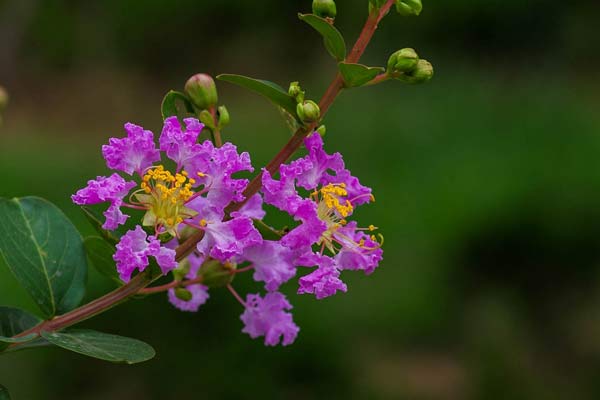
On the other end of the spectrum, Acoma Crape Myrtle is hardy in USDA zones 7 to 9, and can generally withstand temperatures down to about zero-degrees Fahrenheit successfully.
A complete general-purpose garden fertilizer — such as 8-8-8, 10-10-10, 12-4-8 or 16-4-8 — is ideal for Acoma Crape Myrtle. To newly planted small plants (1-gallon size), apply 1 teaspoon of fertilizer monthly from March to August along the perimeter of the planting hole. Larger, established plants will benefit from one broadcast application of fertilizer in spring. Apply 8-8-8 or 10-10-10 at a rate of 1 lb. per 100 sq. ft. or 12-4-8 or 16-4-8 at a rate of ½ lb. per 100 sq. ft. Avoid over-fertilization because it causes excess growth and reduced flowering. The best time to fertilize Acoma Crape Myrtle is just before a rain. Otherwise, water in the fertilizer after application with irrigation. It is not necessary to remove mulch when fertilizing.
It is a common misconception that crape myrtles require pruning in order to flower. This is not only false but has also resulted in virtually millions of plants being pruned very aggressively, a practice commonly referred to as "crape murder." The most natural and beautiful crape myrtle trees result from limited or no pruning. In addition, aggressive pruning leads to increased suckering (shoots arising from below-ground roots) which is not only undesirable but it could result in powdery mildew spreading from the suckers to the canopy of the tree. Aphids are also attracted to the succulent growth which results from aggressive pruning.
Spraying a large Acoma Crape Myrtle can be difficult, so systemic drenches are often the recommendation treatment. Acoma Crape Myrtle seem to do a tolerable job as preventatives where the problems have been known to exist in the past. For a bad infestation on a large specimen, you may want to have a professional handle the job.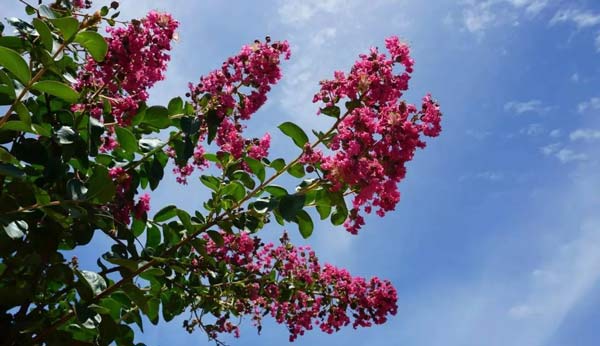
Lagerstroemia indica: the more ‘traditional' varieties.
Lagerstroemia fauriei increasingly popular species, generally only white flowering in species form.
Lagerstroemia fauriei x indica and Lagerstroemia indica x L. fauriei: newer hybrids in a range of colours.
You'll also find varieties named more generally, such as Lagerstroemia “'Midnight Magic”.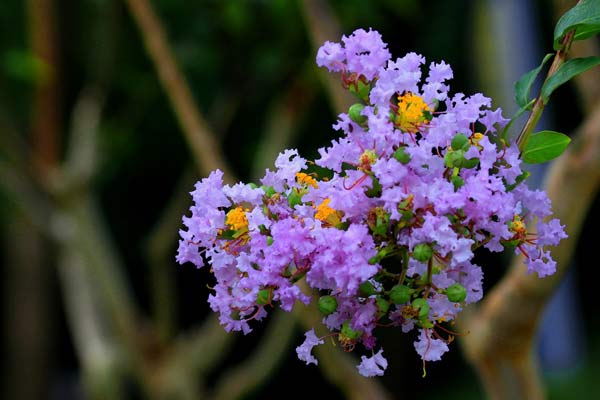
Considering Acoma Crape Myrtle's growth rate can help to decide on the ideal cultivar for your backyard. For example, say you require a small to medium-sized flowering shrub for your garden. It would be best to choose a Lagerstroemia indica cultivar with a mature height of 8 to 10 ft. (2.4 – 3 m). Any larger Acoma Crape Myrtle plant will mean that you have to prune the plant regularly to control its height.
Acoma Crape Myrtle Quick InfoWhere to Grow Acoma Crape MyrtleWhen to Grow Acoma Crape MyrtleHow to Grow Acoma Crape Myrtle from CuttingsHow to Care for Acoma Crape MyrtleAcoma Crape Myrtle Light RequirementsSoil for Acoma Crape MyrtleWatering Acoma Crape MyrtleAcoma Crape Myrtle Temperature & Humidity CareAcoma Crape Myrtle Fertilizer CareAcoma Crape Myrtle PruningAcoma Crape Myrtle Pests & Diseases CareVarieties of Acoma Crape MyrtleAcoma Crape Myrtle Care FAQHow Fast Do Acoma Crape Myrtle Grow?Why is Acoma Crape Myrtle not blooming?Are Acoma Crape Myrtle roots invasive?Are Acoma Crape Myrtle poisonous?
Acoma Crape Myrtle Quick Info
| Botanical/Scientific Name | Lagerstroemia x 'Acoma' |
| Common Name | Acoma crape myrtle |
| Plant Type | Tree |
| Plant Size | 2 to 10 feet height and 2 to 10 feet wide |
| Bloom Time | Spring, summer |
| Flower Color | White, pink, purple |
| Plant Time | Between late fall and early spring |
| Propagation | can be propagated from cuttings |
| Lighting Requirements | Full sun |
| Soil Type | Well-draining soil |
| Toxic | Non-toxic to dogs, cats, and horses |
Where to Grow Acoma Crape Myrtle
Plant acoma crape myrtle in the sunniest location in your front or backyard. Acoma Crape myrtles thrive in plenty of sunshine, where they get at least six hours of sunlight daily. However, it's good to remember that they can withstand some shade.You should also plant acoma crape myrtle tree in a location where the plant's sizeable crown has room to grow and spread. Some Acoma crape myrtles can be wider than they are tall. So, if you want to enjoy the blooming shrubs' full beauty, grow Acoma Crape Myrtle in a spot with enough room for their foliage.
When to Grow Acoma Crape Myrtle
The best time to plant Acoma Crape Myrtle shrubs is between late fall and early spring. Planting before springtime gives the shrubby plant time to adjust and develop a robust root system. Then in spring, the shrub-like tree can start its vigorous growth. Before planting in the ground, water the roots well. You can also plant Acoma Crape Myrtle tree in summer. However, you will need to water the new Acoma Crape Myrtle frequently after planting. Plenty of hydration during warm summer weather helps the young Acoma Crape Myrtle plant adjust to its new environment and results in healthy growth.
How to Grow Acoma Crape Myrtle from Cuttings
Follow these steps to propagate Acoma Crape Myrtle tree with cuttings:Use clean scissors or garden shears to remove hardwood or softwood cuttings. Hardwood cuttings should be about eight inches in length. Take hardwood cuttings once the tree has become dormant for the year, typically in the late fall. Softwood cuttings are obtained in the spring or summer and should be about six inches in length with several nodes.
Plant the cutting in a container with quality potting soil, leaving about one inch of the cutting above the soil line.
Maintain soil moisture and position the pot in a location that receives plenty of sun. Softwood cuttings should see new growth in about a month. Hardwood cuttings will grow more slowly, but won’t be ready for planting until summer anyway.
Once the cutting has taken root and is showing signs of new growth, it can be planted out. Be sure to water generously and position your new plant in a location with abundant light.

How to Care for Acoma Crape Myrtle
Acoma Crape Myrtle Light Requirements
Acoma Crape Myrtle needs full sun (6 or more hours per day) to thrive. With less sunlight, blooms will not be as prolific and their colors may be diminished.Soil for Acoma Crape Myrtle
Although Acoma crape myrtles can be grown in virtually any soil, foliage may turn yellow if soil is too alkaline. Good drainage is required for any type of soil.Watering Acoma Crape Myrtle
Once established, crape myrtles are quite drought tolerant. During the first few growing seasons, they should be watered regularly and deeply once a week, or twice a week in extremely hot weather.Acoma Crape Myrtle Temperature & Humidity Care
Like other crape myrtle varieties that thrive in the sun and heat, the Acoma crape myrtle tree does well even in hot climates, and it has a tolerance for humidity or drought.On the other end of the spectrum, Acoma Crape Myrtle is hardy in USDA zones 7 to 9, and can generally withstand temperatures down to about zero-degrees Fahrenheit successfully.
Acoma Crape Myrtle Fertilizer Care
The Acoma Crape Myrtle prefers well-draining clay, loam, or sandy soils. The pH level of the soil should be 5.5 to 7.5. Apply a high-nitrogen fertilizer in the spring as soon as the leaves appear and again in two months.A complete general-purpose garden fertilizer — such as 8-8-8, 10-10-10, 12-4-8 or 16-4-8 — is ideal for Acoma Crape Myrtle. To newly planted small plants (1-gallon size), apply 1 teaspoon of fertilizer monthly from March to August along the perimeter of the planting hole. Larger, established plants will benefit from one broadcast application of fertilizer in spring. Apply 8-8-8 or 10-10-10 at a rate of 1 lb. per 100 sq. ft. or 12-4-8 or 16-4-8 at a rate of ½ lb. per 100 sq. ft. Avoid over-fertilization because it causes excess growth and reduced flowering. The best time to fertilize Acoma Crape Myrtle is just before a rain. Otherwise, water in the fertilizer after application with irrigation. It is not necessary to remove mulch when fertilizing.
Acoma Crape Myrtle Pruning
Acoma Crape myrtle flowers on new growth of the season, so if you choose to prune, do so in the dormant season, i.e. later winter to early spring before growth resumes. Avoid pruning in early fall before the first frost, because pruning forces new growth and keeps the plant from going dormant. Severe freezes can kill the plant if it is not fully dormant.It is a common misconception that crape myrtles require pruning in order to flower. This is not only false but has also resulted in virtually millions of plants being pruned very aggressively, a practice commonly referred to as "crape murder." The most natural and beautiful crape myrtle trees result from limited or no pruning. In addition, aggressive pruning leads to increased suckering (shoots arising from below-ground roots) which is not only undesirable but it could result in powdery mildew spreading from the suckers to the canopy of the tree. Aphids are also attracted to the succulent growth which results from aggressive pruning.
Acoma Crape Myrtle Pests & Diseases Care
The major problems with Acoma Crape Myrtle include Japanese beetle, aphids, whitefly and powdery mildew. Again, providing a good location and proper sizing to fit the site will minimize most of these problems, but monitor for them and treat as needed.Spraying a large Acoma Crape Myrtle can be difficult, so systemic drenches are often the recommendation treatment. Acoma Crape Myrtle seem to do a tolerable job as preventatives where the problems have been known to exist in the past. For a bad infestation on a large specimen, you may want to have a professional handle the job.

Varieties of Acoma Crape Myrtle
Not too long ago the main type of crepe myrtles grown were Lagerstroemia indica varieties. Today there are a couple of different species and a multitude of crosses and hybrids. Realistically, this doesn't make an enormous amount of difference, as when you shop for a crepe myrtle chances are your main concerns will be flower colour and size. Nonetheless, it always helps to have a bit of an understanding about the names you may encounter.Lagerstroemia indica: the more ‘traditional' varieties.
Lagerstroemia fauriei increasingly popular species, generally only white flowering in species form.
Lagerstroemia fauriei x indica and Lagerstroemia indica x L. fauriei: newer hybrids in a range of colours.
You'll also find varieties named more generally, such as Lagerstroemia “'Midnight Magic”.

Acoma Crape Myrtle Care FAQ
How Fast Do Acoma Crape Myrtle Grow?
Acoma Crape Myrtle are fast-growing shrubs and trees that can grow at a rate of 1 to 2 ft. (0.3 – 0.6 m) per year. The Acoma Crape Myrtle's rapid growth means these garden shrubs are ideal for developing a colorful garden landscape.Considering Acoma Crape Myrtle's growth rate can help to decide on the ideal cultivar for your backyard. For example, say you require a small to medium-sized flowering shrub for your garden. It would be best to choose a Lagerstroemia indica cultivar with a mature height of 8 to 10 ft. (2.4 – 3 m). Any larger Acoma Crape Myrtle plant will mean that you have to prune the plant regularly to control its height.
Why is Acoma Crape Myrtle not blooming?
Newly-planted Acoma Crape Myrtle may not bloom fully until their second season, so be patient if your crape is still establishing itself. Too much shade may also contribute to fewer blooms. Over-pruning can result in decreased flowering, as your tree’s energy will be spent on producing new branches instead of blooms. Too much water or fertilizer can cause foliage growth at the expense of bloom production.Are Acoma Crape Myrtle roots invasive?
A crape myrtle's roots may spread out a considerable distance; however, they are relatively weak and not aggressive. They do not produce heavy side roots that would cause damage to walkways, driveways, or foundations. Shallow crape myrtle roots may prove to be competition for water with surrounding grass.Are Acoma Crape Myrtle poisonous?
Crape myrtles are listed as a safe plant according to the University of California, Davis. The ASPCA also lists them as being non-toxic to dogs, cats, and horses. For more safe plant choices, see 20 Common Plants Safe for Cats & Dogs.Latest Updated
- Benefits of Bugleweed - 7 Science-backed Health Benefits
- Bugleweed Dangers & Side Effects - Is It Poisonous?
- How to Plant Evergreen Trees - What You Should Know
- When to Plant Evergreens - Grow Guide for Evergreen Trees
- 12 Wonderful Evergreen Shrubs for Your Garden
- 12 Popular Evergreen Plants with Pictures for Beginners
- When And How To Prune A Lilac Bush Like a Pro
- How to Grow & Care for Lilac Vine (Hardenbergia Violacea)
- Japanese Lilac Tree (Syringa Reticulata) Care & Propagation Guide
- Shumard Oak Pros and Cons - What to Know
Popular Articles
- Winter maintenance of Antirrhinum Majus
- How to Grow Terminalia Mantaly Tree
- How to Grow and Care for Crossostephium Chinense
- How to grow Antirrhinum Majus in spring
- Peristeria Elata (Dove Orchid) Profile: Info & Care Guide
- Underwatered Snake Plant (Sansevieria Trifasciata) - Signs And How To Fix
- How to Care for Brazilian Jasmine Plant (Mandevilla Sanderi)
- How to Grow & Care for Graptopetalum Purple Delight in Summer
- Rosa Chinensis (China Rose): Plant Growing & Care Tips
- How to Care for Baby Sun Rose (Aptenia Cordifolia)